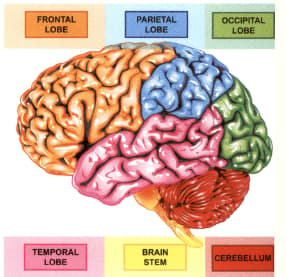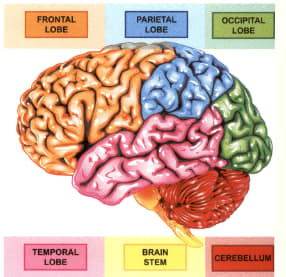Neuroscience is the study of nervous system, with neuroscientists focusing on the brain and its structure. It is a discipline that has developed since 500 BC, with major advances being made since the middle of the 20th century. While the brain has a high composition of water and fat, it also contains a large number of neurons that transmit and receive signals.

The cerebellum contains roughly billion neurons. The cerebral cortex, made up of the frontal, parietal, occipital and temporal lobes, contains roughly billion neurons. The remaining structures contain million neurons.
How many neurons are there in the brain in total? Express your calculations and answer in scientific notation.

How many neurons are there in the brain in total? Express your calculations and answer in scientific notation.

Important Questions on Number Discoveries and Developments
Neuroscience is the study of nervous system, with neuroscientists focusing on the brain and its structure. It is a discipline that has developed since 500 BC, with major advances being made since the middle of the 20th century. While the brain has a high composition of water and fat, it also contains a large number of neurons that transmit and receive signals.

The cerebellum contains roughly billion neurons. The cerebral cortex, made up of the frontal, parietal, occipital and temporal lobes, contains roughly billion neurons. The remaining structures contain million neurons.
It has often been said that the number of neurons in the brain is the same as the number of stars in the universe. If there are stars in the universe, is this statement true? If not, which quantity is greater and by what factor?
Neuroscience is the study of nervous system, with neuroscientists focusing on the brain and its structure. It is a discipline that has developed since 500 BC, with major advances being made since the middle of the 20th century. While the brain has a high composition of water and fat, it also contains a large number of neurons that transmit and receive signals.

The cerebellum contains roughly billion neurons. The cerebral cortex, made up of the frontal, parietal, occipital and temporal lobes, contains roughly billion neurons. The remaining structures contain million neurons.
Each neuron has a length of approximately meters. If they were placed end to end, what would be the length of all of the neurons in the brain?
The Richter Scale was devised by Charles Richter in to compare the intensities of earthquakes. The intensity of an earthquake is determined by the amount of ground motion measured on a seismometer. Each increase of one unit in magnitude on the Richter scale corresponds to an increase of times the intensity measured on a seismometer.
Using this ratio, how many times more intense was the earthquake in China with a magnitude of compared with the earthquake in Haiti with a magnitude of ?
[By expressing the intensity () as an exponential function of the magnitude (), you can compare the intensities of earthquakes that do not differ by a whole integer. ]
The Richter Scale was devised by Charles Richter in to compare the intensities of earthquakes. The intensity of an earthquake is determined by the amount of ground motion measured on a seismometer. Each increase of one unit in magnitude on the Richter scale corresponds to an increase of times the intensity measured on a seismometer.
[By expressing the intensity () as an exponential function of the magnitude (), you can compare the intensities of earthquakes that do not differ by a whole integer. ]
The world's most powerful earthquake was in Chile in and registered magnitude on the Richter Scale. The deadliest recorded tsunami was caused by an earthquake which registered magnitude on the Richter scale off the coast of Indonesia in . If the earthquake in Chile was times more intense than the earthquake in Indonesia, find .
The Richter Scale was devised by Charles Richter in to compare the intensities of earthquakes. The intensity of an earthquake is determined by the amount of ground motion measured on a seismometer. Each increase of one unit in magnitude on the Richter scale corresponds to an increase of times the intensity measured on a seismometer.
[By expressing the intensity () as an exponential function of the magnitude (), you can compare the intensities of earthquakes that do not differ by a whole integer. ]
The two most costly earthquakes both occurred in Japan: the earthquake of had a magnitude of ; the earthquake of had a magnitude of . If the earthquake in was times more intense than the earthquake in , then find .
